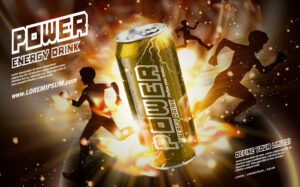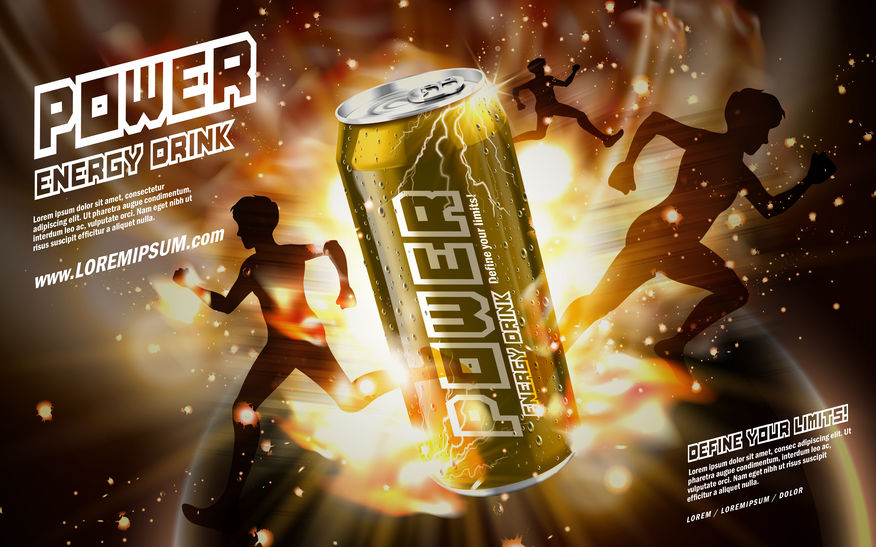
On February 5, 2011, Cassondra Reynolds awoke to hear her husband John gasping for breath from sudden cardiac arrest. She performed CPR as emergency services rushed to their home. At the hospital, the doctor told Cassondra that John’s sugar levels were sky high and asked her a series of questions about his lifestyle, including whether he used drugs or had any health issues. She said he did use energy drinks, but only had one per day. “John was healthy, he worked out every day, he had had a full physical examination the month prior and all his results came back fine.” The doctor explained one energy drink could throw off the rhythm of his heart causing his heart attack.
John remained in a coma and was on life support for the next two weeks, but he suffered from repeated seizures due to the lack of oxygen during his sudden cardiac arrest. On February 17th, John was declared brain dead. The doctors told Cassondra John had irreversible brain damage from the seizures and that he would never recover. She made the difficult decision to remove him from life support, and John died on February 19, 2011.
Energy drink sales in the U.S. reached $9.27 billion in 2019. They contain a variety of substances, but caffeine is the main ingredient. Others include: sugar, taurine, vitamin B complex, guarana and ginseng. Guarana contains caffeine and two chemicals similar to caffeine, theophylline and theobromine. One gram of guarana is equal to 40 milligrams of caffeine. Instead of being labeled as beverages, energy drinks (EDs) are labeled as dietary supplements. Under the Dietary Supplement Health and Education Act of 1994, dietary supplement ingredients do not require FDA approval and the agency has a limited role in their regulation.
In “Energy Drinks and the Risk of Cardiovascular Disease,” the authors said energy drinks are commonly used by young adults and adolescents as a source of energy in order to enhance physical and mental performance. Safety is the biggest concern with the consumption of EDs and case reports, observational studies and meta-analyses have been done to determine the effects of EDs on cardiovascular events. There are a variety of cardiovascular changes in people using EDs, with the most common one being arrhythmias. “The detrimental effects of EDs are cardiac arrhythmias, myocardial infarctions, prolonged QT interval, aortic dissection, and death.”
Their review said case reports have shown that EDs can cause arrhythmias as with John Reynolds, but the mechanism is not clear. Some of the case reports discussed patients who had underlying structural heart disease, abuse of other substances along with EDs. Nevertheless, “it is suggested EDs can be dangerous when used alone or in combination with other substances of abuse.”
In November of 2018, Cassondra Reynolds was asked to share her husband’s story on a social media website. It was quickly shared nearly 400,000 times on Facebook alone. Cassondra started receiving messages from all over the world from people with similar stories. “She wanted a place where she could document cases of energy drink related adverse events and deaths as well as a place to share some of the factual information about energy drinks she herself had learned since her husband’s death.” This eventually led to her starting a nonprofit organization in order to raise awareness about the dangers of energy drinks and pre-workout supplements called The Awareness Project.
A Canadian study on adverse effects sought to assess adverse events from energy drinks in a web-based survey. The researchers found that more than 41.5% the youth and young adults surveyed reported experiencing at least one adverse event. A total of 1.2% reported seeking medical help or having talked to a health care professional about an adverse event(s). Another 1.8% considered seeking medical attention. The most common adverse events reported were: fast heartbeat, chest pain, headache, jitteriness or gastrointestinal issues. A substantial proportion reported they were simultaneously drinking alcohol (22.5%) and participating in sports or physical activity (18.5%), but 44.6% reported none of those activities.
The current findings are consistent with those of Health Canada’s Expert Panel on Caffeinated Energy Drinks, which concluded that, although the probability of serious adverse events is low, given the high volume of use, the risk of adverse events “is considered to be a public health issue.” Public health authorities may be warranted in considering additional regulations on energy drinks, including minimum age restrictions and enhanced health warnings. To assess the prevalence and nature of adverse events from energy drinks, broader consumer surveys should be conducted, in addition to monitoring through current consumer reporting mechanisms.
Advertisements for EDs target young adults, especially men, so it’s not surprising the military services are especially prone to energy drink use. There was a study published in Military Medicine that examined the association between energy drink use and mental health problems, aggressive behaviors and fatigue in soldiers recently returned from a combat deployment. Seven months after their deployment, 75.7% of soldiers reported consuming energy drinks, and 16.1% said they had more than two energy drinks per day. High energy drink use (2 or more per day) was associated with mental health problems, aggressive behaviors and fatigue. Moderate energy drink use (at least once a week or 1 per day) was associated with aggressive behaviors, fatigue and depressive symptoms.
Daily energy drink use was five times higher in this Army sample (29.2%) than in previous studies of Air Force personnel and youth in the general population, and not much lower than the quantity of use reported in a previous study of Army personnel surveyed during a combat deployment (44.8%). It was remarkable that 16% of soldiers in this study reported continuing to consume two or more energy drinks per day in the post-deployment period. In the deployed context, the appeal of energy drinks is understandable given that there is substantial restriction in sleep as well as regular circadian disruption due to night-time operations; indeed, caffeine is a recommended option to sustain alertness in this environment. During the wars in Iraq and Afghanistan, energy drinks were often made readily available to deployed service members at no cost. It is unclear, however, whether the high use reported in this post-deployment sample is representative of Army life in general or the result of continuing deployment-related habits.
The present study provided evidence for an association of high energy drink use and greater mental health problems. Mental health problems like depression, anxiety, PTSD and alcohol misuse were strongly associated with high levels of energy drink use. Previously, it was unclear whether there was a link between high energy drink use and mental health problems. The data from the present study provides further evidence of such a connection.
Aggressive behaviors were also strongly associated with energy drink use. They are problematic because of their link to several issues such as risky behaviors and unhealthy habits, relationship problems, intent to harm others, and suicidal behaviors. In this study they were assessed using a four-item measure. Participants were asked how often they had engaged in the following behaviors in the past month: (1) yelling or shouting, (2) kicking, smashing, or punching something, (3) threatening physical violence, and (4) fighting and hitting someone.
It was interesting that there was an association of energy drink use and fatigue. The finding stands in contrast to the marketing of energy drinks as a way to increase energy and reduce fatigue. This warrants further investigation into whether energy drink use results in greater fatigue over time. The findings are also important from a policy perspective, “given the association between protracted fatigue and problems such as poor job performance or making mission critical errors.”
This study has implications for clinical treatment, namely that providers should assess energy drink use, particularly in those serving in the military, as its use appears to be associated with mental health problems and aggressive behavior. “Research has found that aggressive behaviors are associated with being less responsive to evidence-based treatments for PTSD.” So, in order to maximize treatment outcomes, clinicians should recommend limiting energy drink use during mental health treatment. Tracking energy drink use in civilian clinical settings and assessing their association with aggressive behavior or mental health issues also seems advisable.
Public health messaging should be communicated in a way that centers on the reason energy drinks are so popular. “That is, although energy drinks are marketed as a way to increase energy and decrease fatigue, overuse of the products may be associated with fatigue.” As with many other health-risk behaviors, the message that moderation is critical needs to be communicated on the short-term gains with caffeine use. Military leaders are asked to re-evaluate how energy drinks are made available in the operational environment to best sustain performance without leading to their overuse.
Integrating treatment, prevention, and organizational strategies that support moderation can lead to a cultural change regarding energy drink use. Such strategies may have a role in reducing high-risk behaviors that are current priorities in the military and may enhance the health of service members.
These findings and recommendations should be considered beyond the military. In mental health and addiction treatment settings the use of energy drinks needs to be assessed and monitored for their potential effects on mental health problems like depression, anxiety, PTSD and drug and alcohol misuse. Particularly with high use of energy drinks, two or more daily, monitoring for an association with aggressive behavior should be done. Risky behaviors and unhealthy habits, relationship problems, intent to harm others, and suicidal behaviors are not only found in soldiers returning home from a combat deployment. The paradoxical connection between fatigue and energy drinks has relevance to treatment programs attempting to motivate their clients to develop lifestyle changes in order to support a new way of living.
Here is a link to a website that give the caffeine content of various beverages: coffee, soda, energy drinks and energy shots. For example, here are two of the top selling energy drinks and their caffeine content for 16 oz: Red Bull Original, 160 mg, Monster Energy Original, 160 mg.





